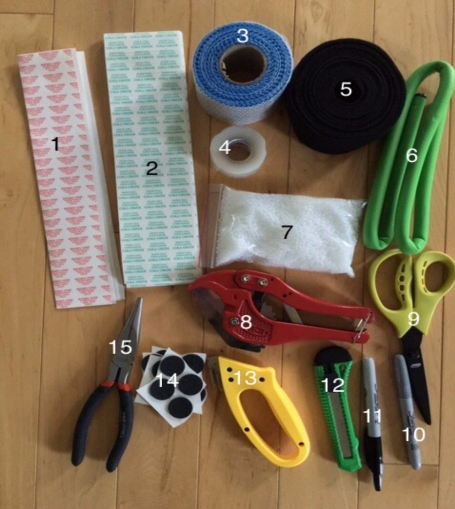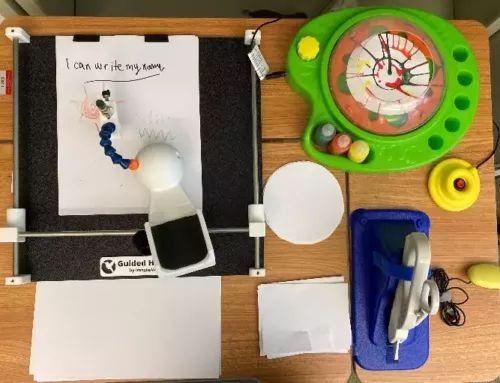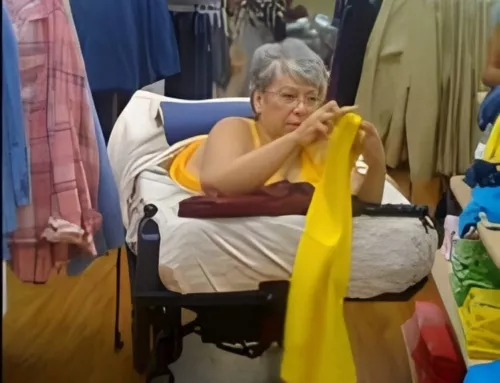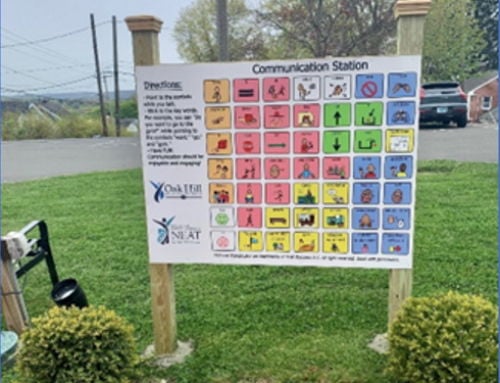Designing a Grabber with Tikkun Olam Makers

Thanks to Kim Lathrop, Administrative Assistant for Ability Tools (the California state Assistive Technology Program), for sharing her experience designing assistive technology (AT) with Tikkun Olam Makers (TOM). Kim says this experience went beyond the benefits of designing AT. She has also made lifelong friends.

- Kim Lathrop with Tikkun Olam Makers at the Bay Area Maker Faire
As an individual with extreme physical limitations (I was born without arms or legs), I have become more than acquainted with assistive technology and special mechanisms made with the intention of making my life easier.
I say ‘intention’ because the people who are behind the creating/making process are usually not people with disabilities. People without disabilities cannot begin to understand our day-to-day needs, the challenges we face nor the obstacles that surface in our path. For a huge chunk of my adult life, I have always said, “I wish people with disabilities were behind the making process because we know our own needs better than anyone.”
And, after years of hoping and wishing for people with disabilities to be more of a part of developing AT, I finally had my wish granted!
A few weeks ago, I was selected to participate in an event where my ideas would actually be heard and created by AT inventors themselves.
Tikkun Olam Makers (TOM) are the ones responsible for bringing this concept to fruition. With the help of other businesses and organizations, they hold 72-hour “make-a-thons” where people with disabilities (a.k.a. “need-knowers”) are teamed up with professional “makers” (a.k.a. engineers, builders, architects, designers, and so much more) and the creating process begins.
TOM is actually based in Israel, so what made this event so exciting was that it was the first make-a-thon held in the United States.
At the end of this planning and designing weekend in San Fransisco, we were asked to present to a group of judges, which was followed by a brief awards ceremony presented by the sponsors.
The entire weekend completely overwhelmed me… but in a great way!
The amount of cleverness and intelligence in the room was truly immeasurable. For example, my team created “The Grabber.” It’s a mouth stick with a grabbing mechanism at the end that I control using my bite.
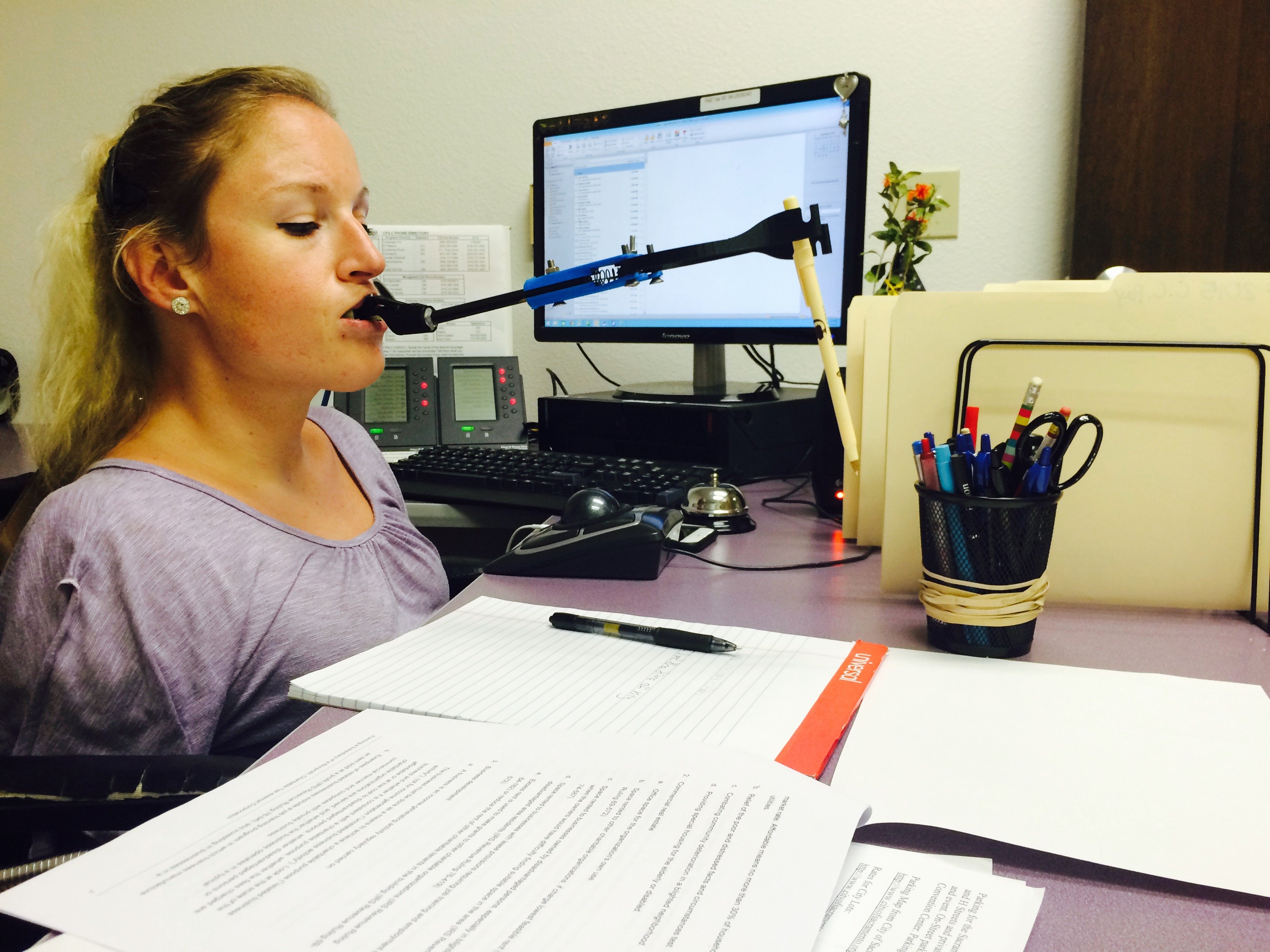
I witnessed another team transform a manual pushchair into an electric power chair that is controlled by using an app on a smartphone.
I also watched while a foldable transfer bar was attached to a woman’s wheelchair so that she would be able to transfer from her chair independently.
Furthermore, after the make-a-thon, every project is set up so that further advancements can be made by the team. TOM does a fantastic job at encouraging continued open communication with the teams after the event.
I saw a lot of new things and met lots of amazing people. I am genuinely touched that I was selected to participate in an experience that I’ll never forget. I hope that my Grabber will one day help the lives of many individuals.

This post was originally published September 29, 2015, at Ability Tools Weekly. Following this make-a-thon, Lathrop attended the Bay Area Maker Faire with TOM. Read her post about that experience at this Ability Tools Weekly page. Learn more about Lathrop’s Grabber project, including files for how-to, at this TOM webpage.
Monthly Blog Digest
Search the blog
State AT Program Blogs
California
Florida
Indiana
Kentucky
Louisiana
Maryland
Massachusetts
Michigan
Montana
North Carolina
North Dakota
Utah
State AT Program Blogs
The AT3 Center, the Association of AT Act Programs (ATAP), and the Administration on Community Living (ACL) make no endorsement, representation, or warranty expressed or implied for any product, device, or information set forth in this blog. The AT3 Center, ATAP, and ACL have not examined, reviewed, or tested any product or device hereto referred.


